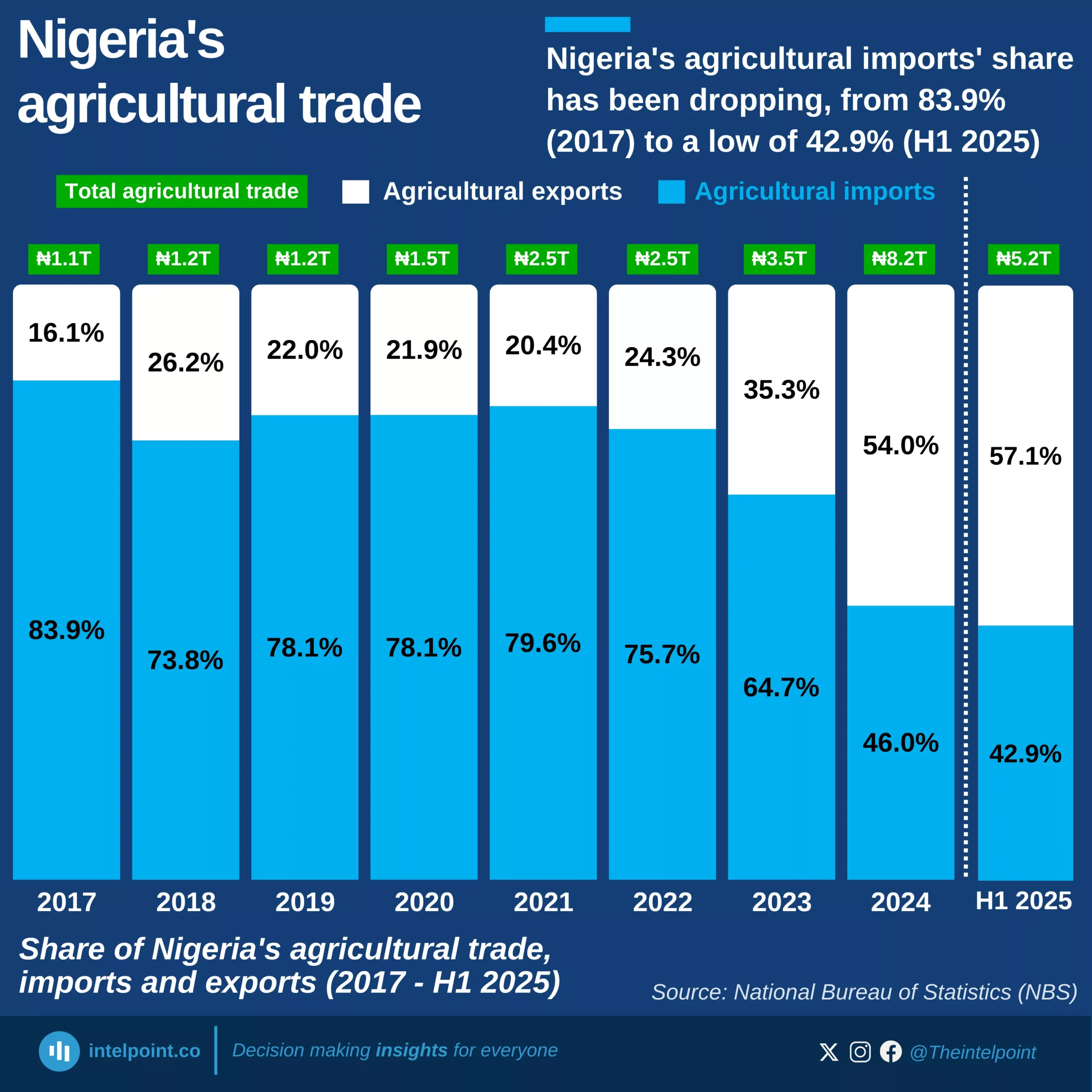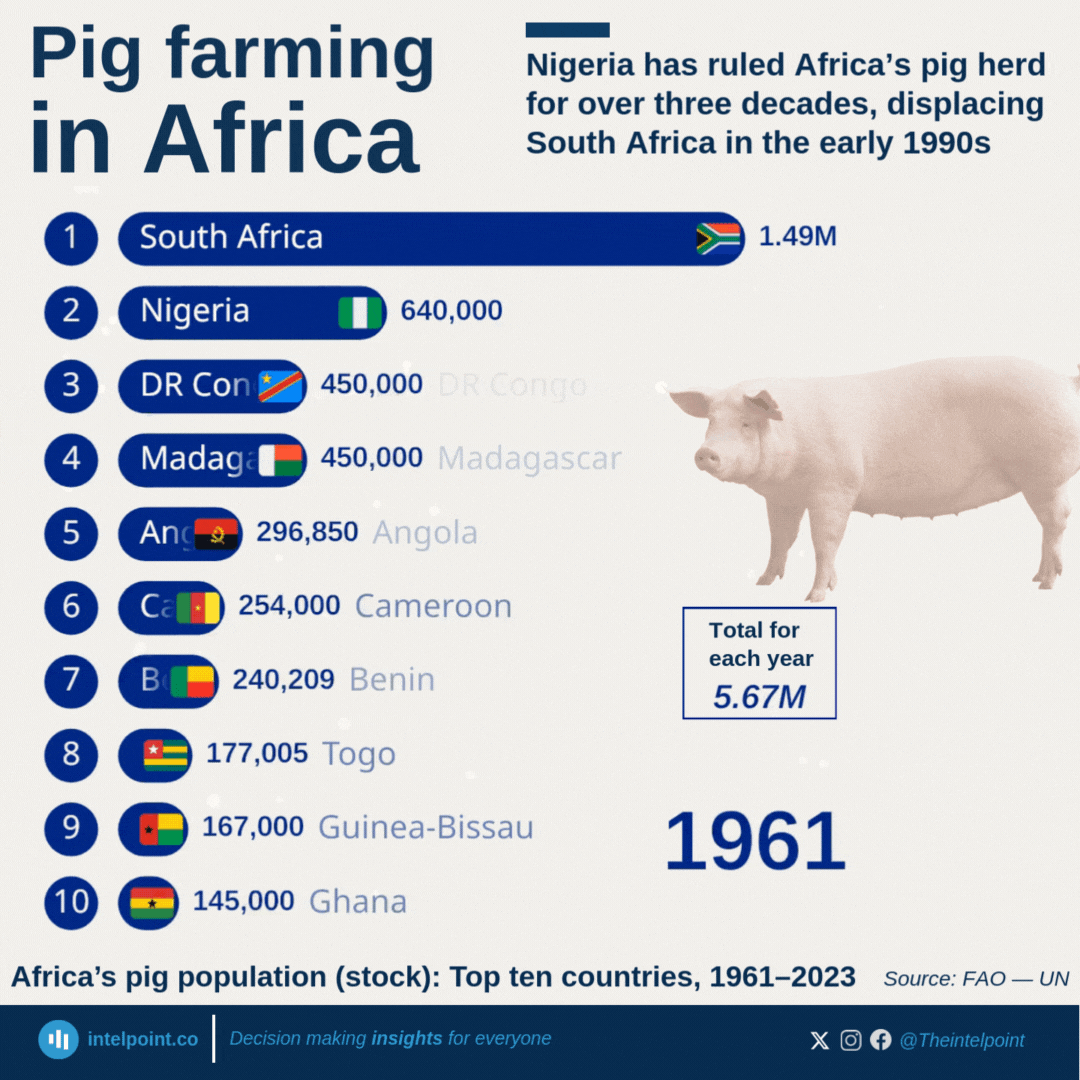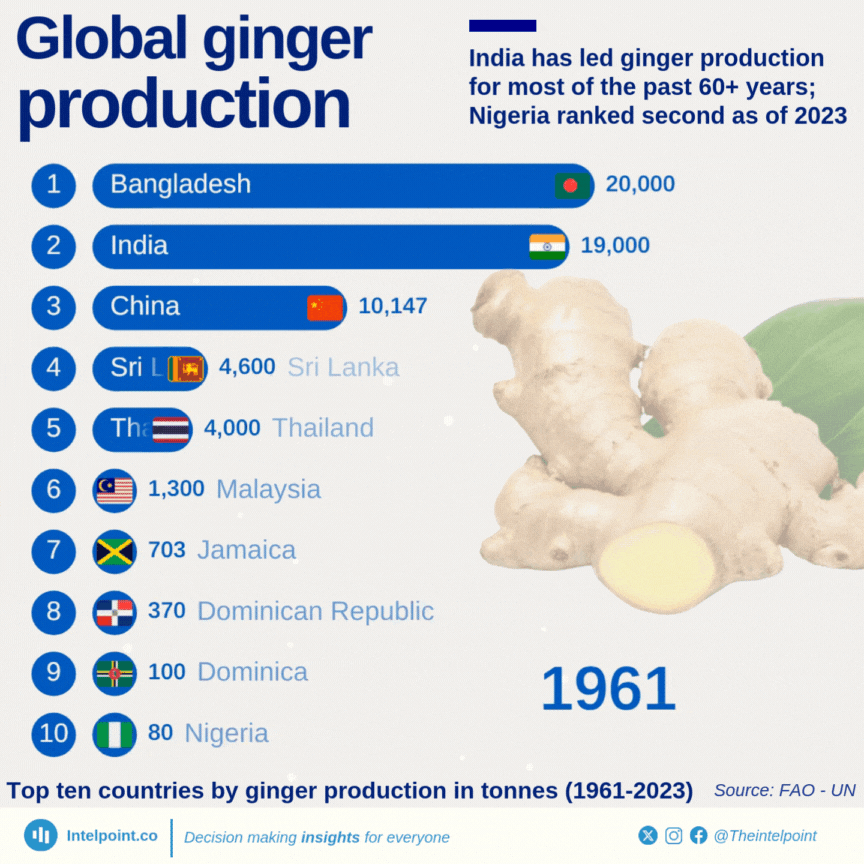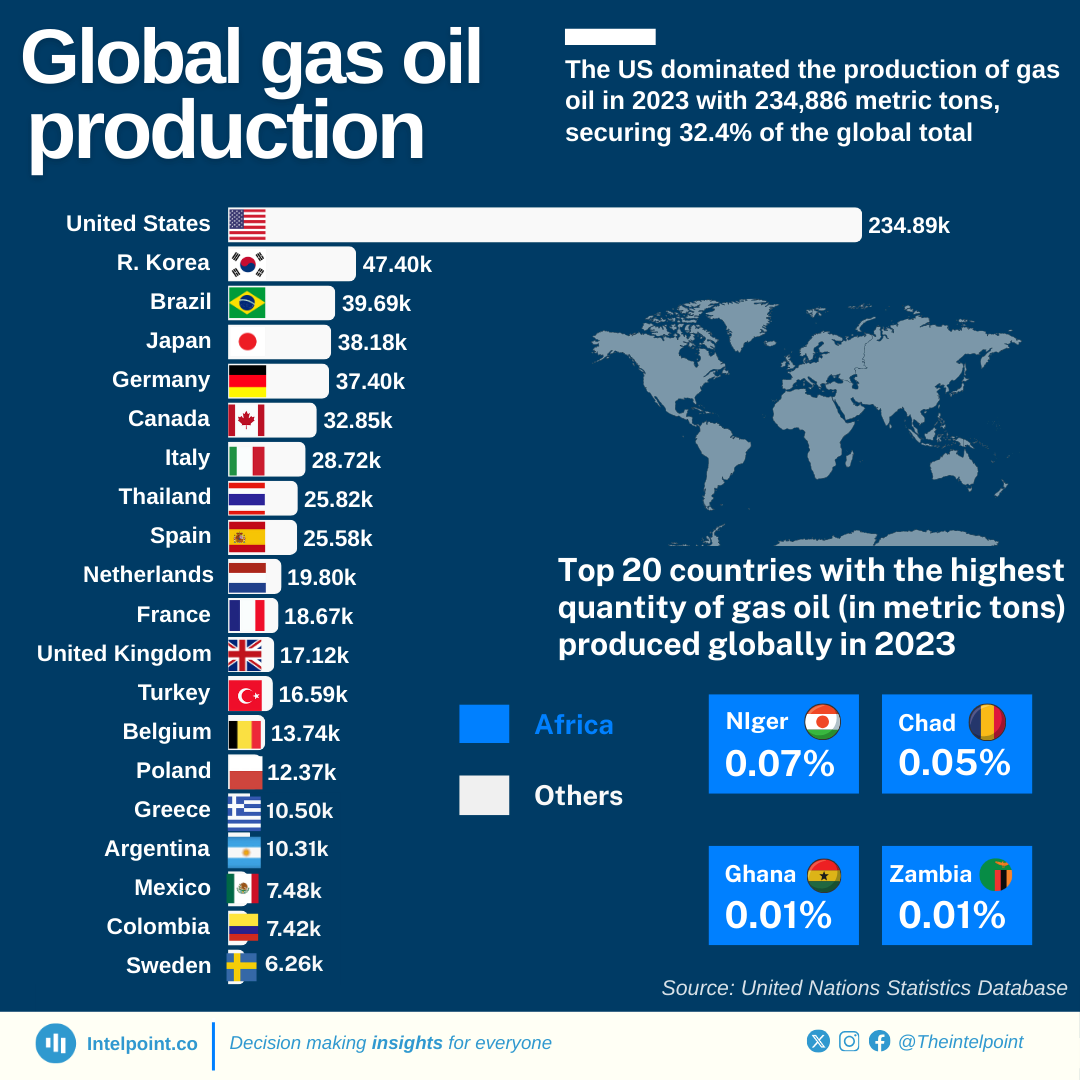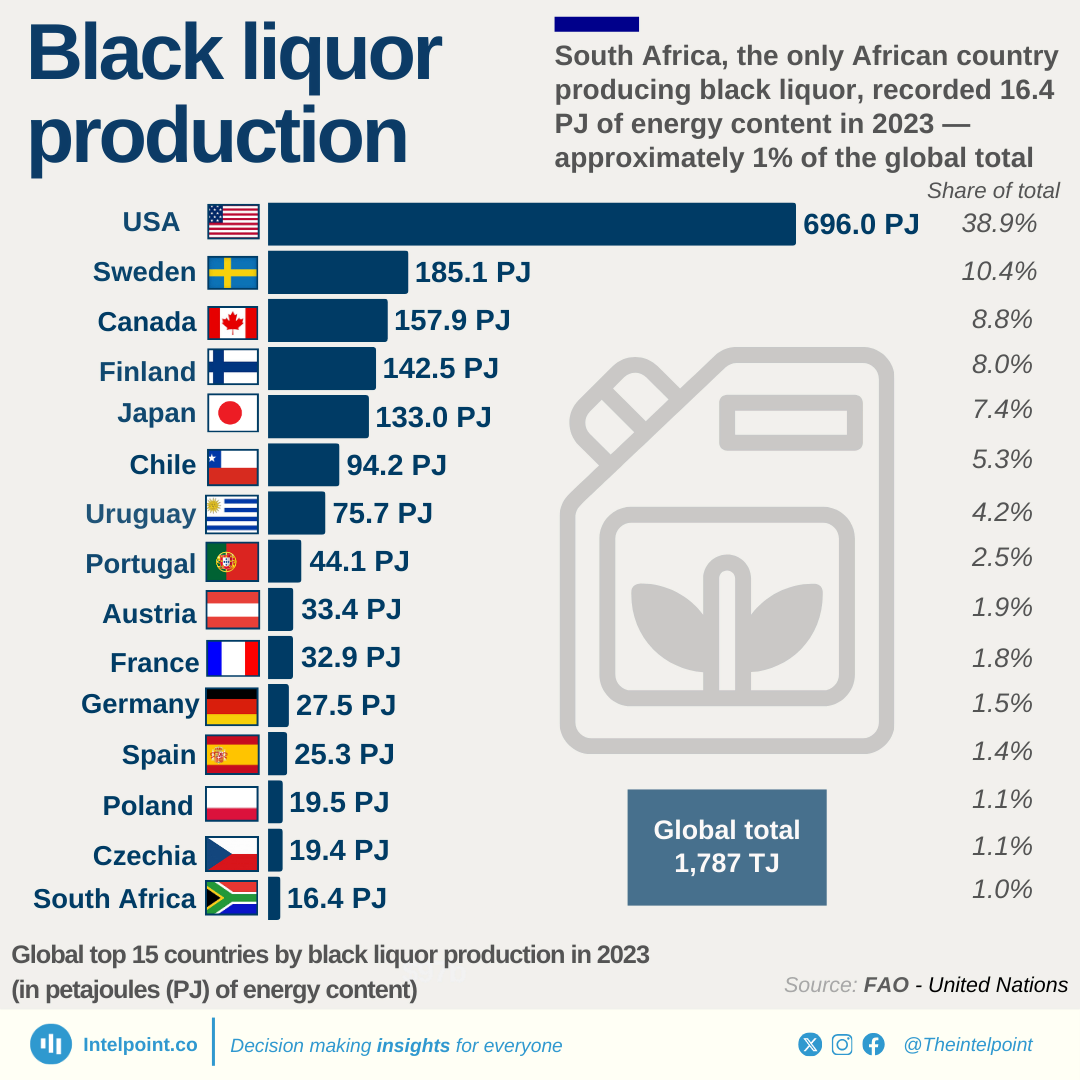Key Takeaways:
Over the past 60 years, Nigeria's kola nut industry has undergone significant changes in production output, while remaining the largest producer in the world. Beginning with 139,000 metric tonnes in 1961, production fell to historic lows of 82,000-95,000 tonnes between 1994 and 2006. The sector experienced severe volatility, most likely due to ageing trees, poor soil, pollination challenges, pests, and diseases during this period.
However, production increased to 100,000 tonnes in 2007 and 162,000 tonnes in 2009. The expansion continued into recent years, with production reaching 183,405 tonnes in 2022 and 188,704 tonnes in 2023. In addition, according to Neogric Limited, Nigeria's kola nuts are mostly imported by the United States, France, Spain, Mexico, India, Germany, the Netherlands, China, and Belgium for industries, including beverages, pharmaceuticals, and traditional medicine.
